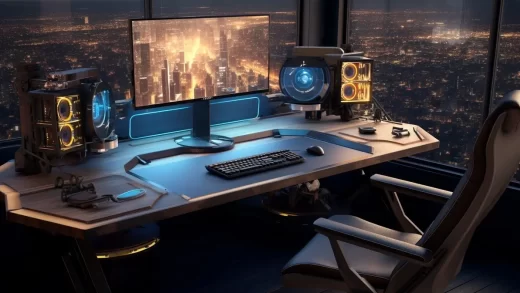Video games have come a long way since their inception, and one of the most significant advancements in gaming has been in graphics. From humble beginnings with simple pixels to today’s photorealistic visuals, the evolution of graphics has been a remarkable journey. In this article, we’ll explore the milestones that have shaped the visual fidelity of video games, taking us from pixels to the realm of photorealism.
1. The Pixel Era: Birth of Video Games
In the late 1970s and early 1980s, video games were born, featuring crude graphics represented by tiny squares known as pixels. Consoles like the Atari 2600 and the Nintendo Entertainment System (NES) laid the groundwork for gaming’s visual evolution.
2. 16-Bit Graphics: A Step Forward
The 16-bit era, popularized by consoles like the Sega Genesis and the Super Nintendo Entertainment System (SNES), brought improved graphics with increased color palettes and smoother animations. Games began to look more vibrant and detailed.
3. The 3D Revolution: Polygonal Graphics
In the mid-1990s, gaming entered the 3D era with consoles like the Sony PlayStation and the Nintendo 64. Developers transitioned from 2D sprites to polygonal models, enabling the creation of immersive 3D environments.
4. Advancements in PC Graphics
While consoles made strides in 3D graphics, PCs also played a significant role in pushing graphical boundaries. Games like “Quake” and “Half-Life” showcased advanced rendering techniques and realistic textures.
5. High Definition Graphics: The HD Era
With the release of the Xbox 360 and PlayStation 3 in the mid-2000s, gaming entered the high-definition era. Gamers experienced crisper visuals, enhanced lighting, and more detailed character models.
6. Artistic Direction and Stylistic Graphics
Not all advancements in graphics aimed for photorealism. Many developers embraced artistic direction and stylistic graphics to create visually unique and captivating game worlds, as seen in titles like “The Legend of Zelda: The Wind Waker” and “Cuphead.”
7. The Rise of Ray Tracing and Real-Time Rendering
In recent years, technology like ray tracing has brought real-time rendering closer to photorealism. Games like “Control” and “Cyberpunk 2077” showcase stunning lighting and reflections, blurring the line between virtual and reality.
8. Virtual Reality (VR) Graphics
Virtual Reality has redefined the gaming experience, requiring even higher graphical fidelity to maintain immersion. VR games strive for realistic visuals to create a sense of presence in the virtual world.
9. The Future: Photorealism and Beyond
As technology continues to advance, the future of gaming graphics holds the promise of achieving true photorealism. With advancements in hardware, rendering techniques, and artificial intelligence, we can expect even more visually stunning and lifelike virtual worlds.
Conclusion
The evolution of graphics in video games has been an awe-inspiring journey, propelling the gaming industry into new frontiers of visual fidelity. From the early pixelated days to the pursuit of photorealism, each era has left its mark on gaming history. As technology continues to evolve, we can only imagine the breathtaking graphical experiences that await us in the future of gaming.
FAQs
- How do developers achieve photorealistic graphics in games?
Achieving photorealistic graphics involves a combination of advanced rendering techniques, high-resolution textures, realistic lighting models, and sometimes real-time ray tracing. - Are consoles or PCs better for experiencing high-quality graphics in games?
Both consoles and high-end gaming PCs can deliver excellent graphics. However, PCs often offer more flexibility in adjusting graphical settings for a tailored visual experience. - Do all modern games use ray tracing for realistic graphics?
While ray tracing is becoming more prevalent, not all games use it. Some games may opt for other advanced rendering techniques or artistic styles to achieve their desired visual aesthetics. - Will virtual reality ever achieve perfect photorealism?
While achieving perfect photorealism in virtual reality is a challenging goal, advancements in technology will undoubtedly continue to improve the visual fidelity and immersion of VR experiences. - What role does game art direction play in graphics?
Game art direction is crucial in defining a game’s visual style and atmosphere. It can make games visually appealing and memorable, even without reaching photorealistic levels of graphics.














